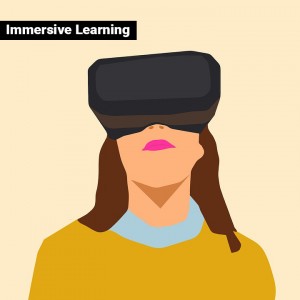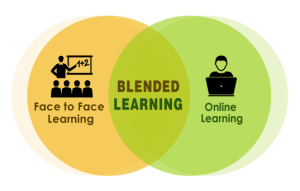What are the new eLearning trends?
eLearning trends are the current and upcoming methods, strategies, and technologies that shape how we learn online. These trends involve creative approaches, tools, and methods designed to improve the effectiveness, engagement, and accessibility of digital education. Some examples of these trends are incorporating technologies like virtual reality, embracing personalized learning paths, utilizing microlearning modules, adding gamification elements, and applying artificial intelligence to customize educational experiences for each learner. In essence, eLearning trends showcase the constantly changing and dynamic nature of online education methods and tools.
xAPI :
What is xAPI used for in e-learning?
The xAPI, also known as the Experience API, is software used in e-learning to facilitate the tracking and analysis of a wide range of learning experiences, extending beyond traditional methods.
xAPI alias Experience API aka Project Tin Can API is an e-learning software which enables the interaction between the learning content and learning systems that tracks and record all types of learner activities. These learning experiences will be recorded in Learning Record Store (LRS). Since xAPI is compliant with most of the mobile devices and tracks the experiences anytime, anywhere, the eLearning authoring tools in their new versions are now adopting it. Soon, most of the companies will get into this stream to track their employees online learning experience, which includes social learning, team-based learning, games, etc.
Immersive Learning:
What is Immersive Learning?
Immersive Learning is an education method using technology to create engaging and interactive learning environments, such as virtual reality or simulations, to fully involve learners in realistic and memorable experiences.
e-learning is now moving ahead in the technology and started using immersive learning to meet the learner needs globally. Immersive learning creates a learning environment to teach skills using much of real life situations and experiences together. This learning mechanism requires 100% of the learner thinking capacity. Immersive learning is highly interactive in the form of both virtually and physically. This includes virtual reality, augmented reality and performance support. In the near future, this immersive learning mechanism conquers the e-learning platform by immersing the learners into realistic situation in the learning.
Blended Learning:
What is blended learning?
Blended Learning combines traditional in-person teaching with eLearning content, creating a flexible and personalized learning experience.
Blended learning is a combination of both traditional classroom teaching and online digital media. The term blended learning has become a corporate buzzword for the past few years in eLearning industry. In the current trend, the term ‘blended’ means that traditional instructor-led training is being supplemented with other electronic formats. It suggests a sophisticated solution to the challenges of tailoring learning and development to the needs of individuals.
According to Garrison and Vaughan “Blended learning represents a restructuring of class contact hours with the goal to enhance engagement and to extend access to internet based learning opportunities”.
Social Learning Experiences:
What is social learning?
Social learning is an educational concept that emphasizes learning through social interactions and collaboration. In this approach, individuals acquire knowledge, skills, and behaviors by observing, interacting, and engaging with others.
There has been a huge influential trend in eLearning industry about Social Learning Experiences where it relates to the experience driven learning approach. The process of learning through experiences makes a collaborative learning or social learning. This methodology is now mostly adapting to the corporate eLearning trainings. Learning can happen through discussion with the experienced employee in an organization, can happen through group discussion over social media platforms like Facebook, Twitter, etc. For peer-to-peer learning, virtual instructor-led training and webinars provide additional possibilities. The principle of 70-20-10 learning says that 70% of the learning happens through experience in the workplace, 20% of the learning happens by imitating and observing others (i.e., social learning) and 10% from formal training.
Microlearning:
What is microlearning?
Microlearning is an educational strategy that involves breaking down topics into small, focused bursts of content for learners. These bite-sized learning modules are designed to be concise and specific, typically lasting no more than a few minutes. This approach aims to facilitate quick absorption of information for enhanced understanding and retention.
The futuristic principles that are evolving in micro learning keep the buzz word in top. The perception on why micro learning stands top in eLearning trends is numerous and unexplainable. A paradigm shift in eLearning industry, Microlearning, means not only chunking of large data into small nuggets but also engaging learner’s attention and make memorable with in short span. As it supports multi-device delivery, learner can gain knowledge anytime and anywhere. When it comes to business application training, Microlearning would be the best approach to train the employees.
Why should you choose custom eLearning development over off-the-shelf solutions?
Custom eLearning development involves the creation of tailored educational content, courses, and learning materials that are specifically designed to meet the unique needs and objectives of a client or organization.
Our Custom eLearning Development over off-the-shelf solutions offers several distinct advantages tailored to the unique needs and goals of your organization.
Here are some reasons why our custom eLearning development services stand out:
Tailored to You: Our custom eLearning development is aligned with your goals and the needs of learners.
Flexibility and Adaptability: Our custom eLearning development ensures a quick response to changes.
Engaging Content: Our custom eLearning development incorporates gamification and interactivity.
Focused Learning: Our custom eLearning development targets specific objectives for increased efficiency.
Cost-Effective Long-Term: Our custom eLearning development offers tailored features, avoiding unnecessary costs.
FREQUENTLY ASKED QUESTIONS (FAQS)
What are the top eLearning trends in eLearning?
Top trends in eLearning include artificial intelligence (AI)-driven personalized learning, immersive technologies like virtual reality (VR) and Augmented Reality (AR), microlearning, social learning, adaptive learning, gamification, and data-driven analytics for insights.
What are advantages and disadvantages of microlearning?
Advantages of Microlearning:
1. Quick and targeted content delivery.
2. Promotes better retention due to focused and concise nature.
3. Flexibility allows integration into busy schedules.
4. Supports just-in-time learning for relevant information.
5. Engaging and accessible, catering to diverse learning styles.
Disadvantages of Microlearning:
1. Not suitable for complex topics requiring in-depth exploration.
2. Some learners may prefer a more traditional and comprehensive approach.
3. Risk of oversimplification, lacking the depth of longer-form learning.
4. Effective implementation requires careful planning and integration.
5. Measuring impact and effectiveness can be challenging.
What is the immersive learning strategy?
Immersive learning is a strategy that involves creating engaging and interactive learning environments, often leveraging technologies like virtual reality (VR) and augmented reality (AR). This approach immerses learners in realistic scenarios, enhancing the learning experience.
What are the benefits of immersive learning?
Benefits of Immersive Learning:
Realistic Engagement: Provides lifelike scenarios for a more authentic learning experience.
Increased Retention: Enhances memory retention through hands-on and interactive learning.
Skill Application: Allows learners to practice skills in a controlled, virtual environment.
Adaptability: Applicable across various industries and subjects, from healthcare to corporate training.
Motivation: Boosts learner motivation and participation through dynamic and enjoyable content.
Safe Environment: Enables learners to make mistakes and learn without real-world consequences.
Flexibility: Can be tailored to different learning styles and preferences.
What is social learning?
Social learning is an educational concept emphasizing learning through social interactions and collaborations. It involves observing, interacting, and engaging with others to acquire knowledge and skills.
What are five social learning theories?
Here are 5 prominent social learning theories:
Social Cognitive Theory: Developed by Albert Bandura, it emphasizes the role of observational learning and modeling.
Social Constructivism: Rooted in the work of Lev Vygotsky, it posits that learning is an active process shaped by social interactions and cultural contexts.
Communities of Practice: Coined by Jean Lave and Etienne Wenger, it focuses on learning within social groups with shared interests and goals.
Connectivism: Proposed by George Siemens, it highlights learning as a networked, distributed process facilitated by technology.
Actor-Network Theory: Explores the role of both human and non-human actors in shaping learning experiences, developed by Michel Callon and Bruno Latour.
What is the immersive learning strategy?
The immersive learning strategy involves creating engaging and interactive learning environments, often incorporating technologies like virtual reality (VR) and augmented reality (AR). This approach aims to immerse learners in realistic scenarios, providing a dynamic and authentic learning experience.
What is difference between API and xAPI?
API, or Application Programming Interface, is a general term for protocols enabling software communication. xAPI, or Experience API, is a specialized API designed for e-learning, offering enhanced tracking and analysis of a wide range of learning experiences.

![TREND copy [1]](https://www.swiftelearningservices.com/wp-content/uploads/2019/04/TREND-copy-1.jpg)
![SL360_LMS_Settings [1]](https://www.swiftelearningservices.com/wp-content/uploads/2019/04/SL360_LMS_Settings-1-495x190.png)




